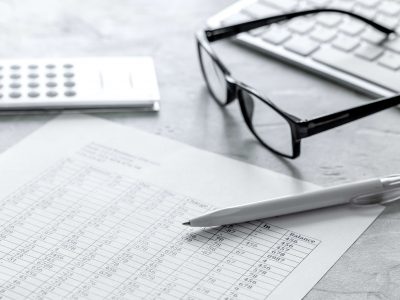
Equipment is also quite valuable and crucial to the operation of any organization. It propels operations forward and allows a company to generate money on a consistent basis. Equipment is also one of the most varied forms of plant assets since it differs based on the industry or the one characteristic of a plant asset is that it is specific demands of each company. Like any category of assets, it’s critical to evaluate plant assets on a company-by-company basis. From there, companies within an industry can often be easily compared. The purchase and sale of plant assets would affect a company’s cash flow.

Examples of Plant Assets
It’s impossible to manufacture products without equipment and machinery, or a building to house them. If the equipment or machinery in question is a necessary part of your business operation, it’s a plant asset. In this article, we’ve explained the concept of plant assets in very detail. We hope you’ll know the difference between plant assets and other non-current assets and the accounting treatment. This method implies charging the depreciation expense of an asset to a fraction in different accounting periods.
Characteristics of Plant Assets
- This move is a strategic effort to diversify the country’s energy mix and reduce electricity costs, Poland finance minister Andrzej Domanski said in Olsztyn, northeast Poland.
- Rent, insurance, and wages are examples of period costs that we match to revenues by posting them to the income statement accounts in the same period as the revenue, using time as our method of matching.
- Therefore, the first few years of the assets are charged to higher depreciation expenses.
- Many business entities use different depreciation methods for financial reporting and tax purposes.
- Plant assets are key to a company’s production process and are often considered among the most valuable items on the balance sheet.
- Industries like heavy shipping or oil extraction stand to employ a greater percentage of plant assets than industries like software, in which teams may be remote and sometimes globally distributed.
- This might be a single storefront site for smaller companies or numerous locations or buildings for bigger enterprises.
Plant assets, also known as property, plant, and equipment (PP&E), are tangible assets with a useful life of more than one year. Even the smallest business has assets, which can include everything from cash in the bank, to the computer you’re working on, to the building where you manufacture piggy banks. Plant assets are a specific type of asset on a company’s balance sheet. If you picture a business as a process that creates wealth for the owners, PP&E are the physical machine.
HOW THE MOTLEY FOOL CAN HELP YOU
Here’s an overview of GE Vernova’s business and whether the stock would benefit investors’ portfolios. When researching companies, the financial statement is a great place to start. The company would now adjust the carrying amount to £90,000, and depreciation would be calculated using the revalued amount. Therefore, the company would record the machine at £110,000 as the initial cost. The only exception is land, which does not have a limited useful life, so cannot be depreciated.
Sum of Years Digit Method
These assets are held by businesses for use in the production or supply of goods and services, for rental to others, or for administrative purposes. Poland has announced an investment of 4.6bn zloty ($1.2bn) from its 2025 budget to initiate the development of the nation’s inaugural nuclear power plant (NPP), Bloomberg reported. The straight-line method is the most commonly used method in most business entities. It is also called a fixed-installment method, as equal amounts of depreciation are charged every year over the useful life of an asset. Monte Garments is a factory that manufactures different types of readymade garments.
Premium Investing Services
- In contrast, plant assets represent long-term property expected to be around for at least a year, often quite a bit longer than that.
- Any land maintenance, improvement, renovations, or construction to increase building operations or revenue generation capacity are also recorded as part of the plant assets.
- The straight-line method is the most commonly used method in most business entities.
- Despite the fact that plant assets are still referred to as such, the assets in this category are no longer confined to factory or plant-related resources.
- This method explains that the utility and level of economic benefit decrease as the age of asset increases.
- The second method of deprecation is the declining balance method or written down value method.
- Depreciation is the process by which a plant asset experiences wear and tear over a particular period of time.
In contrast, plant assets represent long-term property expected to be around for at least a year, often quite a bit longer than that. While they’re most definitely both considered part of the asset category, current assets and plant assets don’t share all that much in common. Plant assets are usually expensive, long-term investments made to underpin a company’s production process. Needless to say, they’re an enormously important part of producing goods and/or services in an economically efficient manner. Businesses must be especially careful in making these investments since buildings and land are immovable and can’t be easily substituted. Any costs incurred after the initial purchase that enhance the asset’s future economic benefits are capitalised onto the balance sheet.

What characteristics do plant assets have in common?
- It is also called a fixed-installment method, as equal amounts of depreciation are charged every year over the useful life of an asset.
- We hope you’ll know the difference between plant assets and other non-current assets and the accounting treatment.
- These assets are significant for any business entity because they’re necessary for running operations.
- Plant assets (other than land) are depreciated over their useful lives and each year’s depreciation is credited to a contra asset account Accumulated Depreciation.
- The plant, expected to be located near the Baltic Sea, is set to start operations in about ten years.
